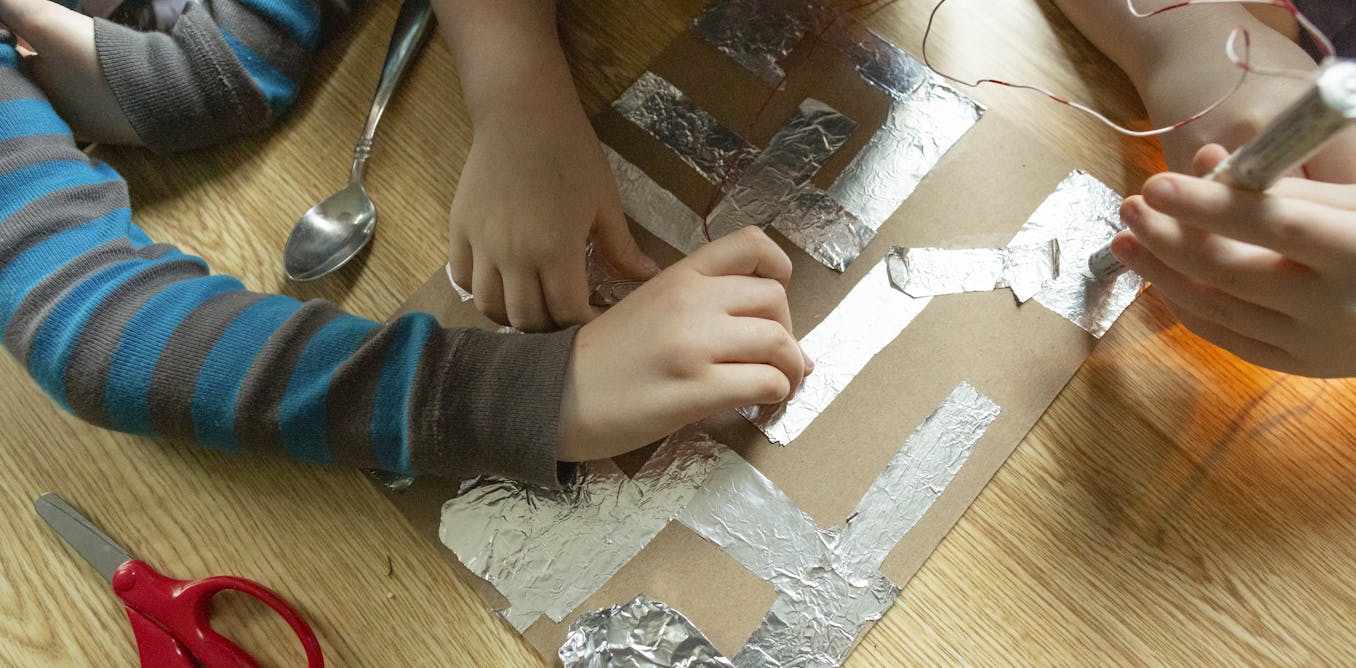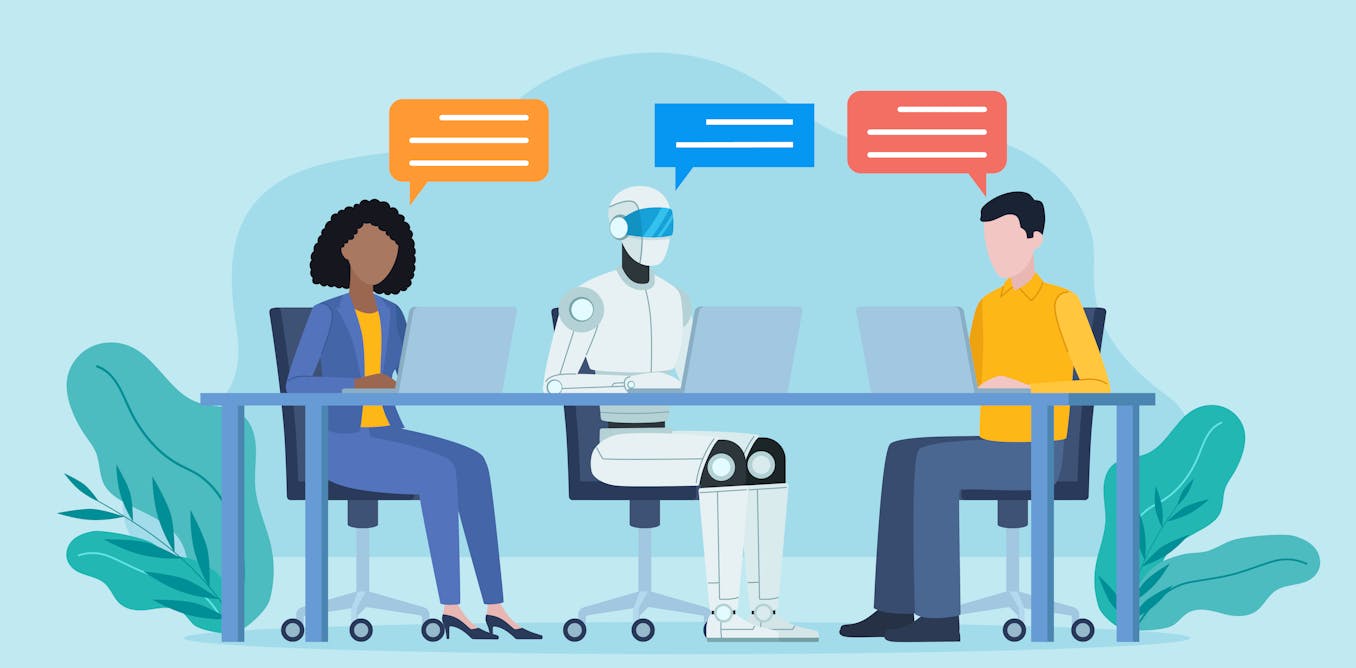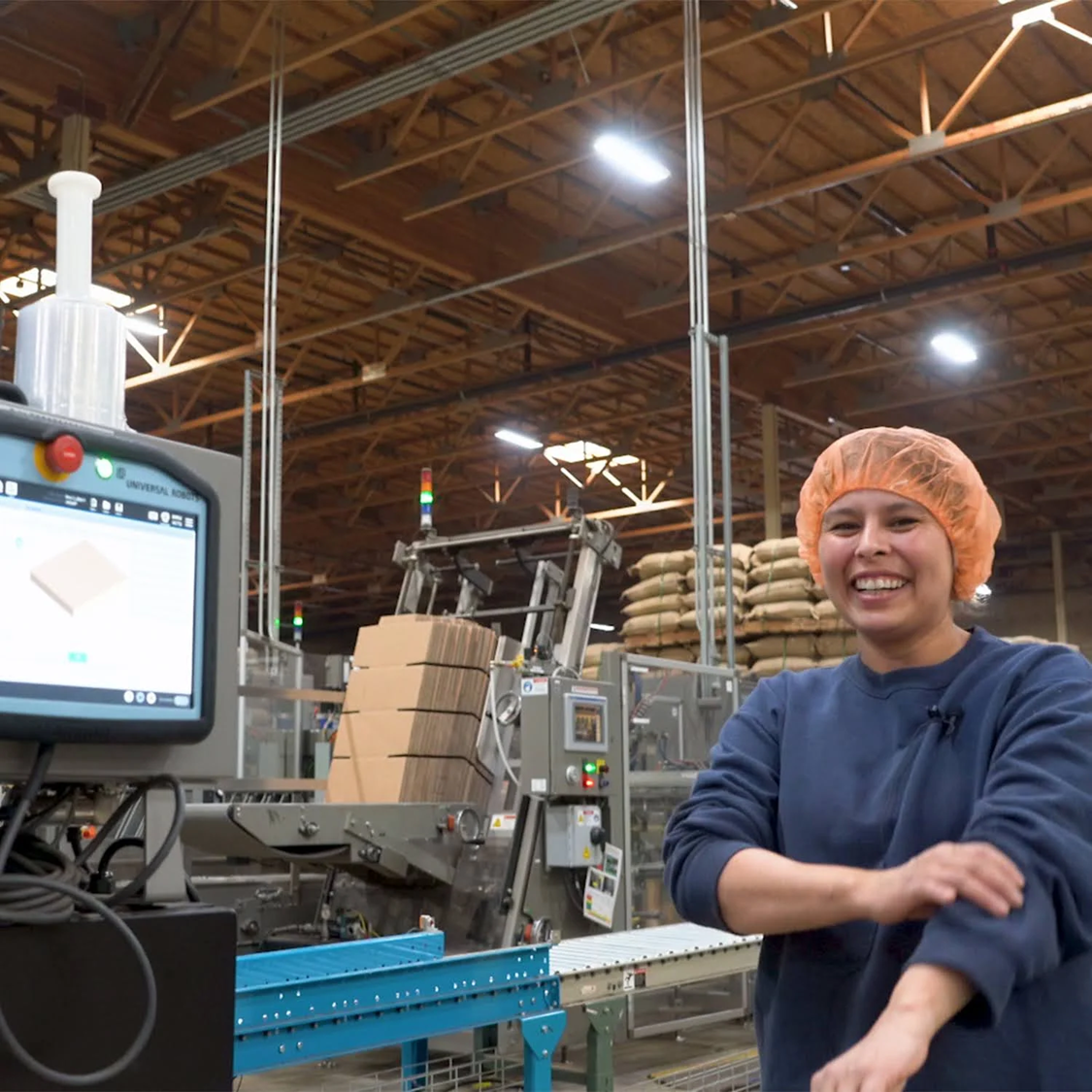For the past half-century, the jobs that have commanded the greatest earnings have increasingly concentrated on knowledge work, especially in science and technology.
Now with the spread of generative artificial intelligence, that may no longer be true. Employers are beginning to report their intent to replace certain white-collar jobs with AI. This raises questions over whether the economy will need as many creative and analytic workers, such as computer programmers, or support as many entry-level knowledge economy jobs.
This shift matters not just for workers but for K-12 teachers, who are accustomed to preparing students for white-collar work. Families, too, are concerned about the skills their children will need in an economy infused with generative AI.
As a professor of education policy who has studied AI’s effect on jobs and a former K-12 teacher, I think the answer for teachers and families lies in understanding what AI cannot – and perhaps will not – be able to do.
Prior waves of automation replaced routine and manual jobs, boosting the earnings advantage of cognitively demanding work. But generative AI is different. It excels at pattern-matching in ways that allow it to simulate human coding, writing, drawing and data analysis, leaving the lower rungs of these occupations vulnerable to automation.
On the other hand, because its output mimics patterns in existing data, generative AI has a harder time handling complicated reasoning tasks, much less complex problems whose answers depend on many unknowns. Moreover, it has no understanding of how humans think and feel.
This means that the “soft skills” – attributes that allow people to interact well with others and to be attuned their own emotional states – are likely to be ascendant. That’s because they are integral to solving complex problems and working with people. Though soft skills such as conscientiousness and agreeableness are considered to be personality traits, research suggests these are emotional tools that can be taught.
Teaching emotional awareness
The good news is that soft skills can be taught in tandem with traditional subjects such as math and reading – those areas for which teachers are held accountable – using techniques teachers already know.
For example, teachers often ask students to submit “exit tickets” as they depart the classroom at the end of a lesson. These are brief, written reflections or questions about the concepts students just learned.
Exit tickets can also be used to help students burnish their emotional and social skills along with their academic learning. In practice, teachers can give prompts that focus on moments of intellectual bravery, emotional regulation or interpersonal understanding, such as:
- Write about a time when you helped someone today.
- Tell me about someone who was kind to you today. How were they kind?
- Describe a time this week when you learned something that seemed very hard. How did you do it?
The point of the task is not just to boost students’ mood or engagement, though these are great byproducts. The goal is to help students realize that their emotional responses to external circumstances fall within their control. Enhanced awareness of their own emotions predicts children’s ability to manage frustration, to perceive and anticipate the emotions of others and to work smoothly with other people. All of these are vital workplace skills that will likely become more valuable with the rise of generative AI.
Teaching problem-solving
Teachers can also have students practice solving messy problems whose answers are not known. For example, as elementary students learn to calculate perimeters, areas or volumes, they can work in groups to find the measurements of objects around the school, including large or oddly shaped items. Teachers can prompt students to reflect not just on the correctness of their answers but on how they framed and approached each problem.
Real-world problem-solving, also known as authentic assessment, can be taught in any discipline, with examples that include:
- Testing the soil slopes and moisture levels on school grounds and proposing landscaping solutions.
- Creating and pilot-testing video campaigns for social causes.
- Reimagining how history might have played out if leaders had made different choices, and considering policy implications for today.
Teaching children to unpack complexity helps them understand the difference between seeking textbook answers versus testing possibilities when the best option is unknown. Solving novel, complex problems will continue to befuddle AI, not only because there are many steps and unknowns, but also because AI lacks our spatial and emotional understanding of the world. Even in the long term, countless variables that humans instinctively grasp will be difficult for computers to intuit.
Protecting slow learning
The technology complaint I hear most often from teachers is that students are having generative AI do their work for them. This happens not because students are deceptive or evil but because humans are self-regulating creatures. We take shortcuts on tasks that seem dull or too daunting in order to prioritize tasks that feel more rewarding.
But when students are building new skills, delegating work to AI is a huge mistake. By making slow things fast, AI undermines learning, because effort is needed to learn hard things.
Associated Press
For this reason, I think teachers must protect the classroom as a place where basic skills are learned slowly, alongside other students. For many lessons, this will mean harking back to the days before computers, in which students wrote assignments by hand or presented their work orally, learning to anticipate and respond to different viewpoints. If students are permitted to use digital automation tools, they should be prompted to reflect on how they used them, what they learned from them and which skills they weren’t able to practice – such as spelling, long division or bibliography formatting – when they delegated work to the tool.
The soft skill to rule them all
The truth is no one knows exactly what will happen to workers in an AI-enabled economy. People disagree about the skills AI will complement or replace. But the skills that underpin modern technology, such as math and reading, will likely continue to matter, as will the intra- and interpersonal skills that make us distinctly human.
Perhaps the most important skill schools can teach children today is the self-awareness to prioritize learning over shortcuts, and to refrain from delegating work to machines until they know how to do it themselves. It will also become even more important to be able to work with others in order to unpack hard problems.
An AI-enabled society will not be a society in which complex problems simply disappear. Even as the labor market reorders itself, I believe opportunities will abound for those who can work well with others to tackle the great challenges that lie ahead.

The post “Kids need soft skills in the age of AI, but what does this mean for schools?” by Jennifer L. Steele, Professor of Education, American University was published on 08/15/2025 by theconversation.com





















